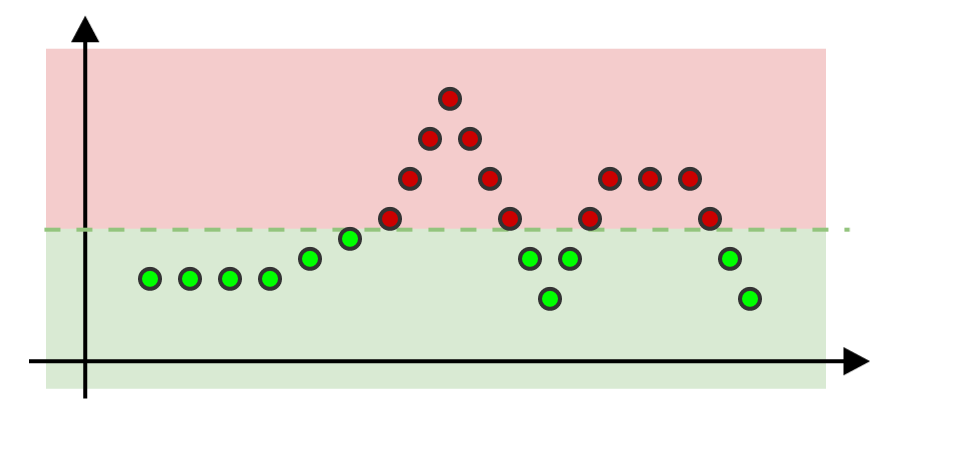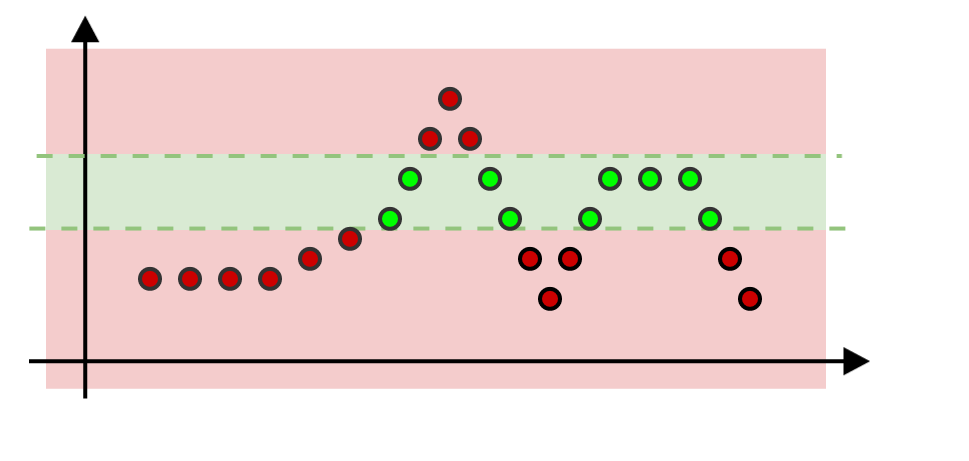Indicators¶
Overview¶
Warning
Checks are renamed Indicators.
An indicator is a Python function that queries a source, retrieves the data and uses it to compute a QOS percentage. An indicator is included in a rule : when we execute a rule, we execute its indicator(s).
Concretely an indicator converts some datapoints into a percentage :
{
"1513855920": 109,
"1513856040": 113,
"1513856160": 125,
[...]
"1513890000": 114
}
After having been processed by the indicator, these datapoints will be converted into a QOS (e.g. 99.456%).
Simple Threshold¶
This indicator defines a threshold when the datapoints will be considered as valid. Every datapoints which are above a given threshold will lower the QOS.
Threshold examples : 200, 200.1, -200, -200.1, …
In this example, the threshold is defined to 200 and the effect is illustrated below :

Interval¶
Likewise the threshold indicator, but datapoints which are not into a given interval lower the QOS.
Interval examples : 200:300, -200:200, -300:-200, 200.1:300, …
In this example, the threshold is defined to 200:300 and the effect is illustrated below :

Note
Note these examples just use a few datapoints, but of course it can be much more in reality (like dozens of thousands). This will improve the accuracy of your QOS.